Having a new camera is exciting — playing around with settings and looking at the first results on your computer. It is very easy to set the exposure, and some basic settings are not difficult to find, but do you really take time to learn how your camera works?
Most people don’t buy a camera very often. That is understandable. These pieces of equipment are too expensive to buy very often, and you can go on taking pictures with a camera for many years, without the need for another one.
I was a salesman in a photography shop for over five years, and I sold a lot of cameras in my days. During that time, I learned that many people tend to buy a new one just before a holiday. That is probably the moment they realize their camera is not that good anymore, or they remember it broke the previous year.

A very modern camera from the eighties in the previous millenium. The Minolta X-500 with modor Drive MD-1 was my camera. Using the camera was very easy. No extensive menus or customized buttons. Just a shutter dial, aperture ring, and a dial to set the film sensitivity, which was called ASA.
But if you buy a camera a week before you go on that once-in-a-lifetime trip to a faraway land, you probably haven’t learned to use the camera. For most holiday photographers, it is not necessary to know a lot. Most of the people that I have sold a camera to prior to their holiday have used the automatic setting only. They don’t care about manual exposure, depth of field, or other specialized things. These people only care about a memory.
For us hobbyists and photographic enthusiasts, it is somewhat different. We love to play around with settings, and cool features of our new camera. Still, a lot of photographers haven’t mastered their amazing camera. When I am standing at an fjord with them, looking to the northern lights high in the sky, they sometimes struggle with some settings, because they never really learned to use their camera.

The modern camera of today is very complex. A lot of settings and features are possible. But you can also return to the green setting, making this complex camera the same as a simple compact camera. But this is not why you bought this type of camera, of course.
My Own Experiences With the Panasonic Lumix DC-GX9
Learning how your camera works sounds obvious. But it is not. Not to everyone, that is. It is more than being able to set an exposure, or some basic setting like white balance and file format. If you have any knowledge of photography, those are the things you can do without thinking.
It is much different with all those other settings. I know this from experience.
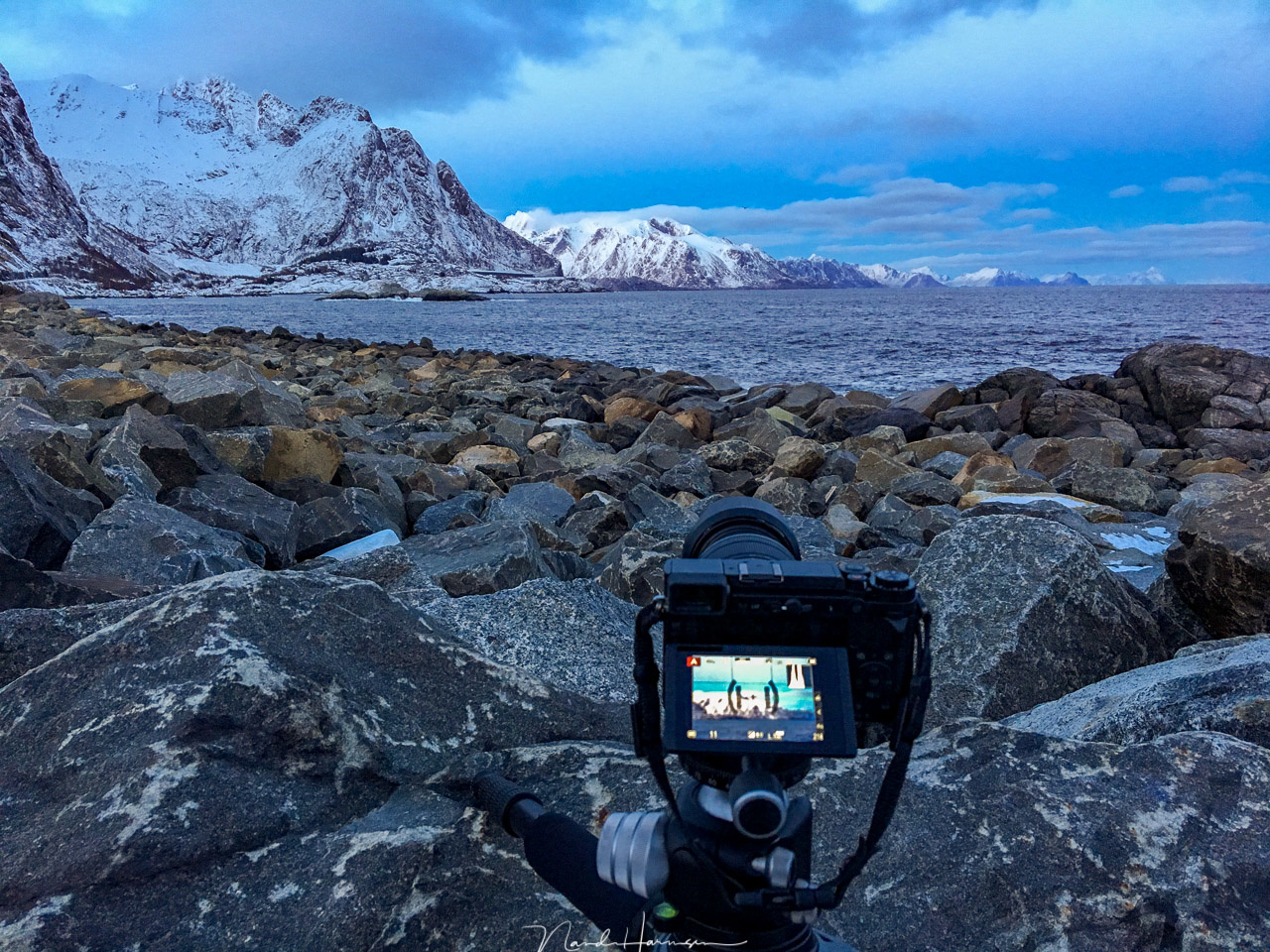
In 2018, I reviewed a Panasonic Lumix DC-GX9 during the winter at Lofoten trip. I did not had any time to learn about the camera, but I did during the trip. It was far from ideal.
I have the opportunity to use a lot of different cameras for reviews. A few years ago, I was handed a Panasonic Lumix DC-GX9 camera, just one day before I went to Lofoten. I was asked to make a review. There was no time to study the camera and learn about the settings. It was my first Panasonic to review, so everything was completely new. On top of that, I had to switch between my Canon 5D Mark IV and the Panasonic many times. Although exposure and many basic settings were very similar, everything else was completely different.

One of the images I took with the Panasonic Lumix DC-GX9, as seen from the rorbu we stayed in that week. A very capable camera to shoot this nice morning twilight. (Lumix GX9 | 17mm | ISO 640 | f/8 | 1/125s)
If I had received the Lumix DC-GX9 only a week earlier, I could have learned about the settings and the many features and been able to play around with all the possibilities of that camera. Well, I managed to shoot a lot of nice pictures, but I think I could have done a better review if I had had some more time to learn how that camera worked.
A New Camera for This Year’s Trip to Lofoten
This year, I have another camera for the trip to Lofoten. I was handed a Fujifilm GFX 100 with a threesome of nice lenses. I have worked with Fujifilm before. I used the X-Pro2, GFX 50S, GFX 50R, and I have a X100T myself. Although Fujifilm cameras and the menu structure aren’t new to me, there were still some issues that I would have run into at Lofoten.

During this year's winter at Lofoten, I will use the amazing Fujifilm GFX 100, with a 23mm lens, a 63mm lens, and a massive 250mm lens. Fortunately, I had two weeks to get used to this camera. Now, I am prepared.
I have been photographing with the GFX 100 for a few weeks now. Setting up the camera for my personal preferences was no problem. But when I had arranged a model shoot, I did run into a few issues that I needed to solve.
First of all, because I wanted to use flash, I had to set the electronic viewfinder to ignore the exposure settings. One of the amazing things of an electronic viewfinder is the ability to preview the exposure settings. But that won’t work when using flash. It is also a setting that I would love to change for night sky photography at Lofoten. I had found that setting already, or so I thought. But it turned out to be a completely different setting, one that I had overlooked.
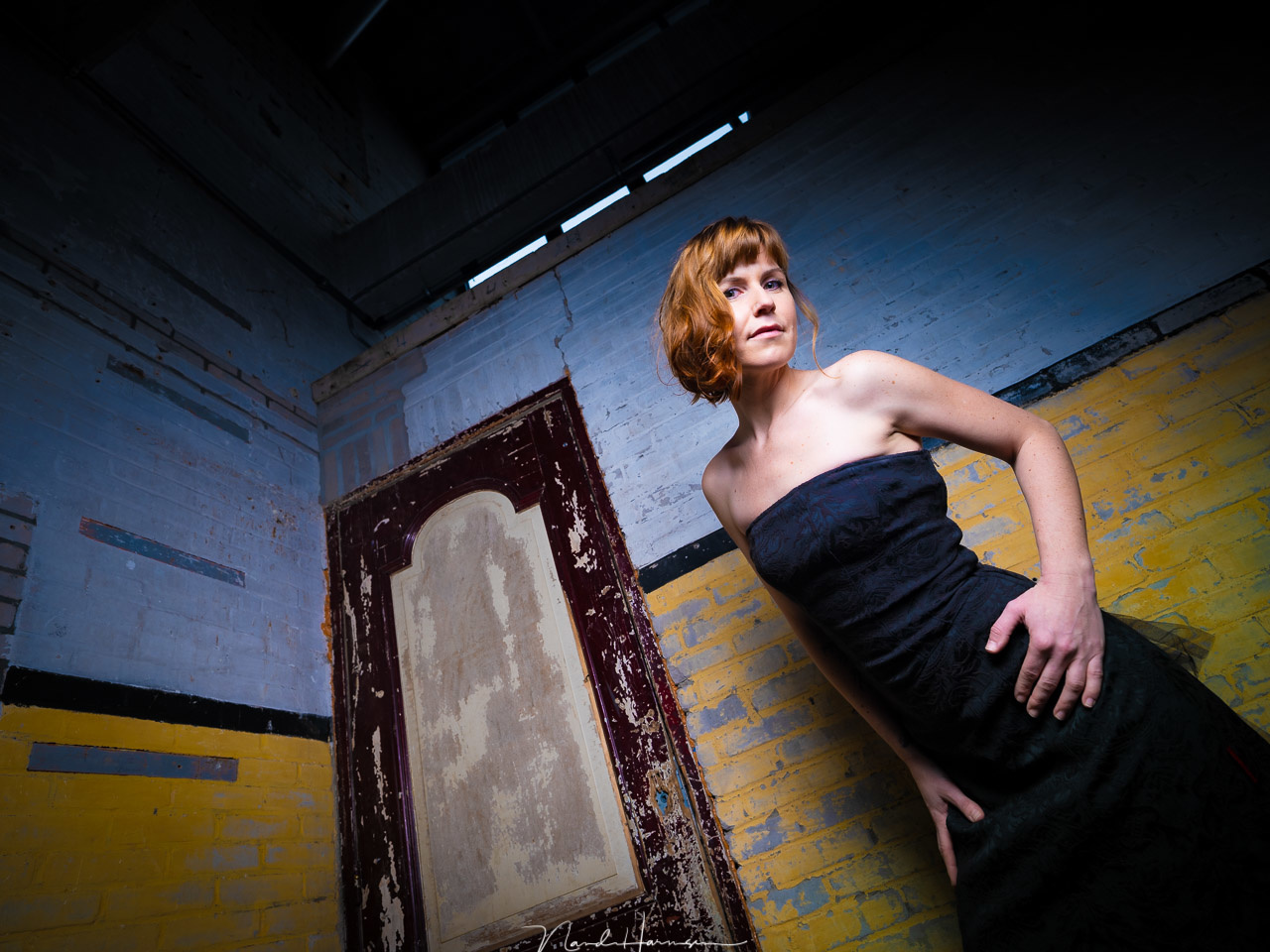
I organized a model shoot with Wendy to get familiar with the Fujifilm GFX 100. I used a Profoto B10 strobe with a strip light modifier. During the shoot, I discovered two things that will help me during the trip to Lofoten. (GFX 100 | 23mm | ISO 350 | f/5.6 | 1/100s)
The second problem I ran into was a bit more serious. When we changed locations, I had placed the camera inside my camera bag. When I took it out again, the shutter dial seemed to be locked somehow. And there was no indication of how to unlock it again.
I tried a lot of buttons and a combination of buttons, but I could not find it. After some research on the internet with my smartphone, I finally found the right button. It took me about 20 minutes, which was no problem at that time. But that would be enough to miss a burst of northern lights at Lofoten.
The Lesson Learned
These two examples show how important it is to learn to use the camera before you go on holiday or before you start to shoot at a location that will be a once-in-a-lifetime thing. Learn where to find the different settings in the menu and where to change certain behavior of the camera. If you have customized your camera extensively, learn how and where to change it if necessary. You might think you will never need to do that again after the first setup, knowing all the things you’ll ever need are under customized buttons and personalized menus. But when a camera is resetting itself for some reason or you have upgraded the firmware prior to an important shoot, which isn’t that smart to do, it can be quite frustrating or even reason to panic.
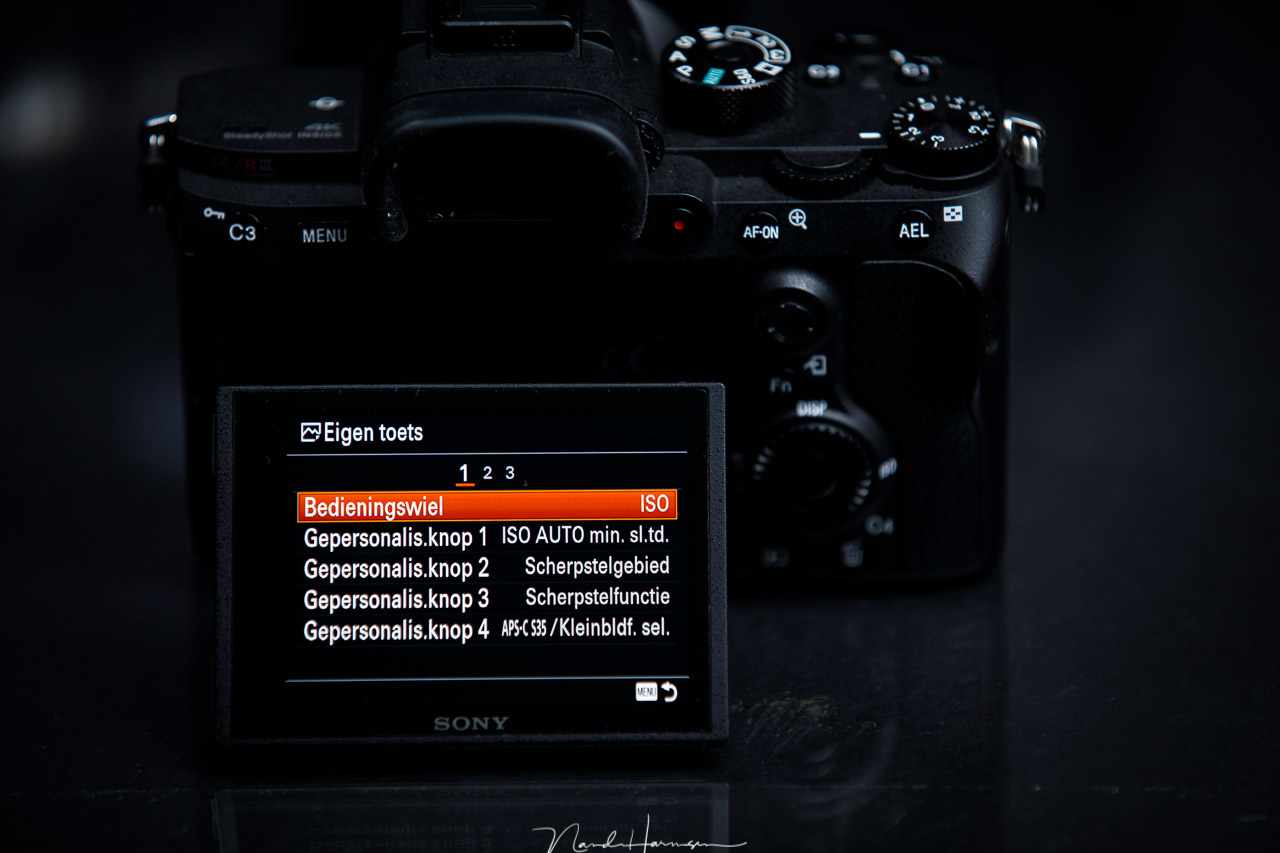
The customized menu of the Sony a7R III makes it possible to assign a lot of options to buttons. This way, you can make the camera very personal. But it might also prevent you from getting to know the camera.
I have seen the latter a lot, especially with the of Sony cameras. It is really because of its wonderful customization capabilities. Photographers tend to rely on this customization so much that they start to panic when something goes wrong. And believe me, it always happens at the wrong time.
But this also applies to the other brands. After all, the modern camera is a complex piece of machinery with a lot of amazing functionalities. It would be a shame if you only used the basics of something that is capable of so much more.
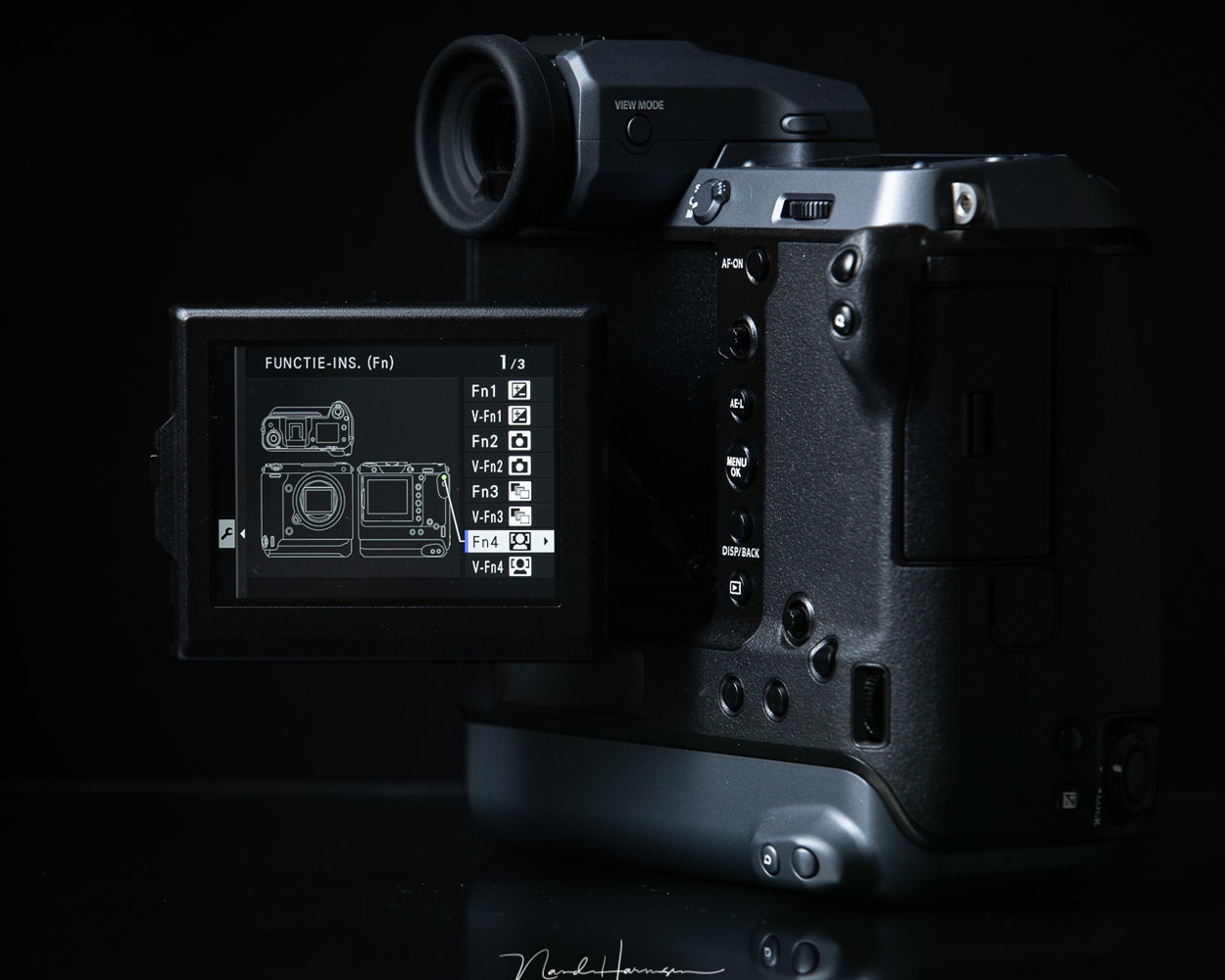
The Fujifilm GFX 100 is able to assign custom functions to buttons. I have learned how to change the settings if needed. This way, I am prepared.
My Advice for All Photographers
This is my advice for every photographer around. If you haven’t done so already, please learn how your camera works, so you don’t have to think twice about finding some setting. Use the customization capabilities and personalized menus, but also know what to do when you suddenly are in need of the functionality you never needed before.
And perhaps you are searching for a setting that doesn’t even exist in your type of camera. That is something I have also seen happen before. So, learn how your camera works, and you will have more time to enjoy your photography.
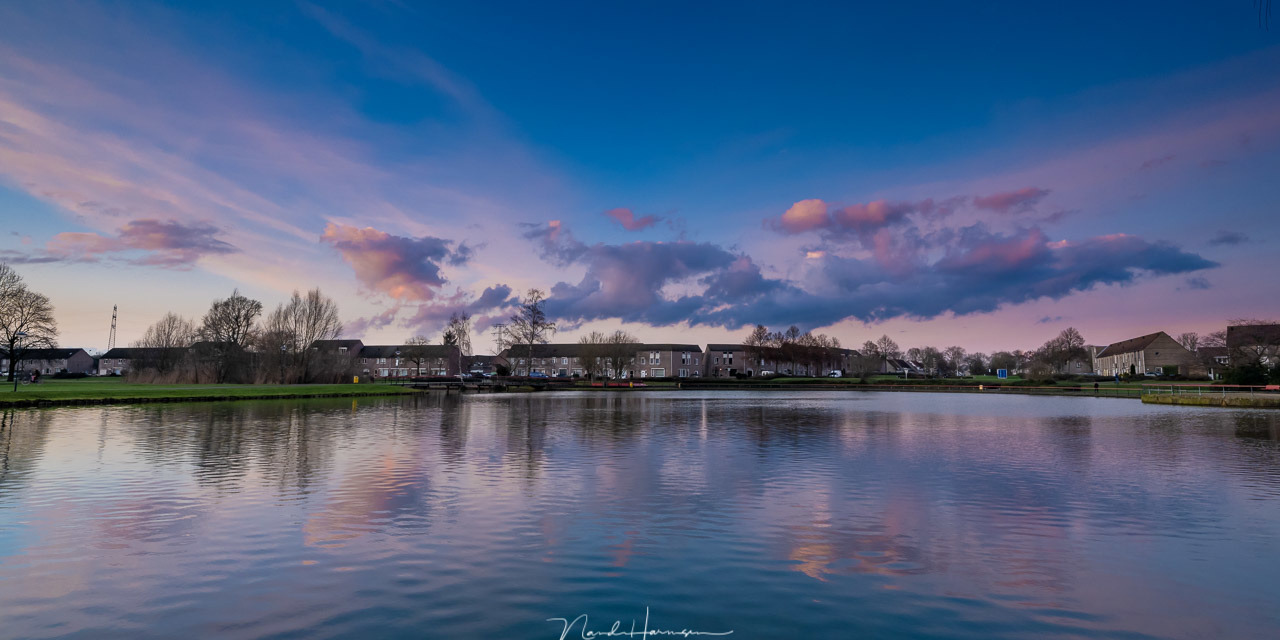
One of the first images I took with the Fujifim GFX 100. Since that moment, I have customized the camera to my own needs. I made it my personal camera, in a way. Too bad I have to return it again after I am back from Lofoten. (GFX 100 | 23mm | ISO 2,500 | f/8 | 1/60s)
Have you ever run into a situation where you couldn’t find the setting you needed? Please share your thoughts and experience in a comment below.







Another aspect of this problem: a case can be made that cameras today are hugely over-featured, resulting in missed shots and bloated, confusing menu systems.
I wish I could connect my camera to my PC and use a convenient PC application to go through the menus - read detailed online feature descriptions while looking at those menus - and disable and HIDE features I'll never use.
If you feel that way about Canon, it's only because you haven't studied its features enough to know that you can do that.
One way to hide (sort of) menu options is to use the My Menu option and add all your most used options there. With my camera I’m able to create multiple menus, each containing six options. Never need trawl through pointless menu options again.
Yes that's a good idea.
Yeah, and like this morning I totally noticed the big red button on the vacuum cleaner I've owned for ten years and realised it turns the brushes on.
Excellent advice. Camera operation is not photography - and you can learn all about operating your camera at home. Don't wait until you are in the perfect spot in the perfect light to pull out the manual so you can change a setting!
Exactly. I come across people in the camera club I'm a member of asking pretty basic questions about the workings of their camera. A clear sign they haven’t gone through and understood the menu system, how it works and what it can offer.
Adjusting many or most of the settings on your camera Is only something you need to do once. On the Sony A7R3 those settings one does need to alter regularly depending upon the situation are easy to access. Custom buttons makes this even more straightforward. I would recommend that you go through every menu on your camera making sure that each setting is set for how you use you camera.
I mess around with my cameras at home all the time and I think I’ve only ever had to google something whilst out in the field twice, and one of those times was getting my head around Fuji’s tracking customisation whilst shooting motorsport.
Great advice this about anything you own, not just cameras I think.
Totally agree - there is no substitute for getting to know your camera - or at least the functions you find yourself needing for the style of photography you use regularly. I recently change brands, and upgraded. The new camera is much more customizable, which I really like, but the learning curve has been steep because of it. Step one was to learn what it could do that I was likely to take advantage of. Step two was to try different settings to see what worked for me. Step three was to save the most commonly used combinations into user-defined shooting modes, so they can be accessed easily.
Like anything that at first seems overwhelming, taking one step at a time helps you work your way through it, and learn a bit about it in the process.
Looking at the picture: nando-learn-your-camera-sony-menu.jpg, all I can say is; Setting it to a readable language would probable help ;-)
What is that? Dutch?
This weekend I got into MLC myself (after being an (D)SLR shooter all my life) and though the camera I bought is from the same maker as my older cameras, it has been 10 years since I last bought a camera.
Looking at the menu in the new camera, I really fear for the new, young people that buy their first camera, hoping to take up photography as a hobby. The menu system are truly overwhelming.
Not to talk about the camera layout itself.
When I started out, you had a focus ring, an aperture ring, a shutter speed dial, a ISO/ASA dial (that maybe also worked as an exposure compensation dial) and if you was lucky enough you also had a mode dial with +4 settings on it. And you where good to go.
My new camera have buttons that each have a funktion, that I can change to some other funktion, depending on what mode the camera is in.
If I make a user menu mode, I can even change that button to more funktions, that if I give another button, a funktion to change button settings, I can even change the first buttons funktion, on the fly.
HELP!
Indeed, that is the Dutch language.
Every time I am asked, what the best advice for a new photographer, I say, “read the manuals, (for all your equipment), understand them, and practice shooting with the manuals handy.” People keep telling me that that is the most stupid, ridiculous, condescending, and meaningless advice I can give.
In all my years of teaching photography, it has been the best advice ever! So many noobs keep asking questions about extremely basic things. I give them that advice. When it is time for class, they are understanding everything, and start asking relevant, and even advanced questions.
There are so many misconceptions on the Internet, (and on YT education channels), about how HSS flash works. But if people took the time to simply read their camera and flash manuals, (especially Olympus, who invented the technology), they would realise what garbage is out their, and the actual limitations of HSS, (and that it is not a magic wand solution, but a workaround for a problem).
Glad that someone else realises the importance of reading the manual, and practising with it.
Manuals are fine but I find they usually don’t tell you what a feature is or does, only that the particular setting turns it on or off, for example. For a more in depth explanation you need to search the internet for users of your camera who fully understand those functions.
For a more in-depth explanation, you can also go out and shoot with the doggoned thing. This is digital--it's not like you're using up film. I see people asking questions online that could have been easily answered in less time by a few test shots. And then, if there were still questions, at least they'd be questions asked from a higher level of knowledge.
«… I find they usually don’t tell you what a feature is or does….»
Hmm. I cannot argue against your experience. Maybe it is dependent on the manufacturer. It would seem weird to me to make a technological device, and not tell the customers how to use it.
Nevertheless, I did say “reading the manual, and practising with it.” Hopefully, what one cannot glean from a poorly written manual, one can learn from using.
Reading the manual is fine, and I also want to give that advise. But learning the manual by heart won't help you a lot. Understanding the menu and functions is what is needed.
No one said, “learning the manual by heart.” Indeed, I said, “Understand them.”
«Understanding the menu and functions is what is needed.»
…And how does one understand the menus and functions? I do it by reading the instructions that go with it, a.k.a., the manual.
Despite the criticism Sony get for their A7 cameras from a lot of people, what I love about my A7III is the sheer number of buttons and customising options. Yes the UI is overly complex but once I set up all of the buttons to my preferred settings and customised the My Menu with essential but less often needed settings, I no longer need to think about the settings at all. Things like white balance, zoom (for manual focusing), peaking, creative styles, IBIS on/off, all available with ease.